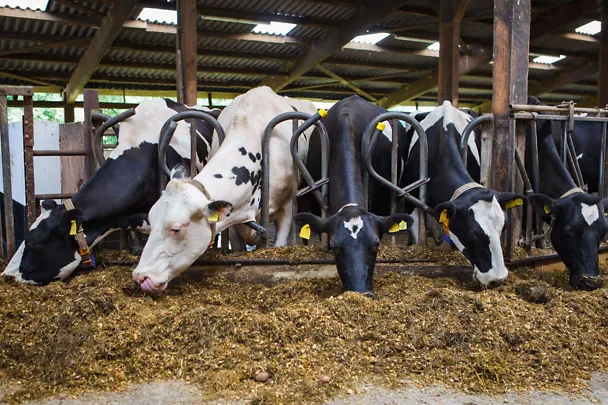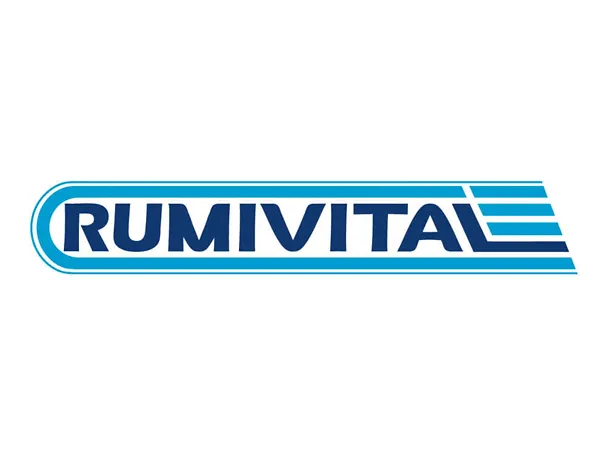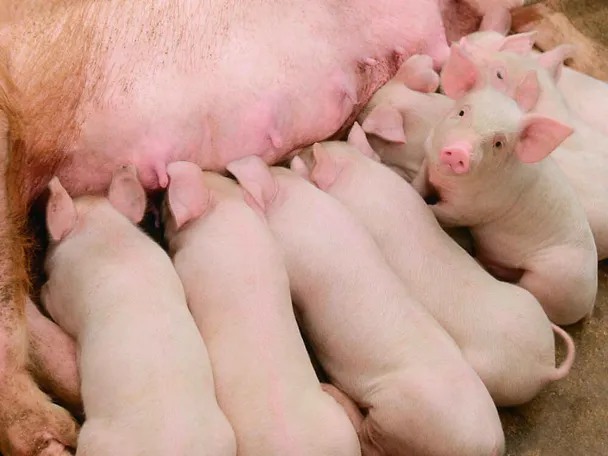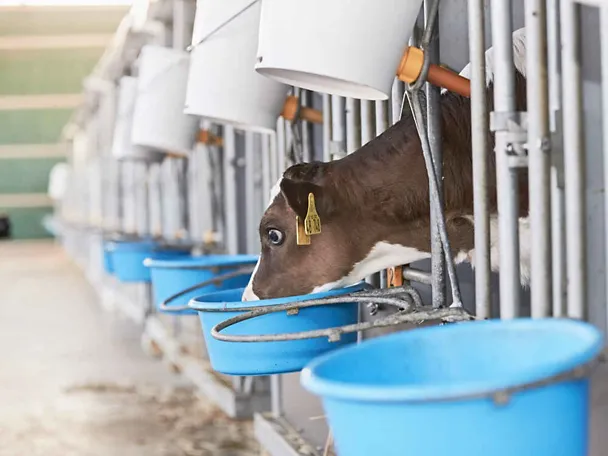Stable milk performance despite heat stress

© Ramona Heim - stock.adobe.com
Heat stress can occur in dairy cows even at temperatures of around 20°C. The consequences are inferior milk performance, poor milk composition, diminished reproductive performance and poor hoof and udder health. The walking behavior of the automatic milking system (AMS) also deteriorates as a result. You can now give your cows targeted support by selecting the right components for their feed.
High temperatures and increased humidity during the summer months present a variety of challenges for dairy cows.
- Ration tends to reheat at the feed fence. This causes feed intake to decrease and nutrient and energy provision to drop (see Fig. 1).
- Buffer substances are lost as a consequence of panting and sweating. The danger of acidosis increases.
- Cell counts in the milk rise and milk performance and composition decline.
- Hoof problems begin and fertility drops
Avoiding reheating in the mixed ration
Reheating is caused by the oxygen introduced during mixing and is promoted by ingredients such as sugar and starch, especially when outside temperatures are warm. The yeasts and molds still present in the silage cause smelly changes that result in a drop in feed intake. Furthermore, reheating and mold growth are always associated with losses of high-quality nutrients.
The conservation products SCHAUMASIL 5.0, SILOSTAR TMR PROTECT and SILOSTAR LIQUID guarantee effective protection against reheating of the ration for 36 hours. Trials by the DLG test center confirm the excellent protection against reheating (see Fig. 2). The three SCHAUMANN products carry the DLG seal of quality for TMR and PMR stabilizers.
Stabilising blood and rumen pH
With increased respiration, the CO2 content in the blood is reduced. The cow hormonally excretes carbonate - this building block is then missing for bicarbonate formation (buffer) in the saliva. The addition of RINDAMIN BP, the special combination of puffering substances such as the highly available magnesium source MIMAG for blood and rumen, effectively prevents acidosis. In addition, the milk contents are stabilized (see Fig. 3).
RINDAVITAL PANSENFIT, a combination of buffer substances and live yeasts, supports fiber digestion in the rumen (see Fig. 4) in addition to the buffering effect by reducing excess acids. This results in a more stable rumen pH value, which leads to higher feed intake, better utilization of the ration and increased activity at the AMS.
Improving digestibility
The active ingredient RUMIVITAL®i supports microbes in the rumen during digestion. The results are an increased passage rate and a high feed intake. In addition, the feed conversion and energy efficiency from maize silage is around 0.31 MJ NEL/kg DM higher when RUMIVITAL®i is applied (see Fig. 4).
Cell counts under control
Toxins from feed as well as oxidative stress put considerable pressure on the liver metabolism of dairy cows. With its special combination of toxin binders and antioxidants, RINDAVITAL VARIO PROTECT protects the metabolism and the liver from increased strain, enabling it to ensure performance even in stressful situations. It also supports udder health and reduces the risk of increased cell counts.
Protecting energy supplies
Very high doses of feed concentrate may well increase the energy content in ration, but they also increase the risk of acidosis, which leads to diminishing milk fat contents. Nevertheless, a low milk fat content does not necessarily indicate acidosis. Milk fat content can also drop when cows mobilise less body fat to reduce unnecessary metabolic heat. Use SCHAUMANN ENERGY to bridge any gaps in energy that arise.
Calving tip
The strain on cows when they are calving – particularly at high temperatures – is extremely high. The loss of electrolytes and fluids during birth is intensified by additional sweating. Even feed intake suffers twice as much during calving under heat stress, and cows run the risk of slipping into acidosis more quickly. RINDAVITAL ENERGIETRUNK replaces lost electrolytes and boosts feed intake with the help of the ASS-CO Ferm live yeast complex, and prevents acidosis (see Fig. 5).



